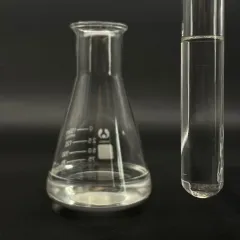Betaine surfactants
It is generated by the reaction of fatty tertiary amines and salt chloroacetate, consisting of cocoylpropyl betaine, dodecyl betaine, cetyl betaine, and lauroyl propyl betaine. It is milder than the first three and is currently the major surfactant in infant shampoo.
In 1940, the American DuPont Business created and applied this type of compound. Like amino acid surfactants, this kind of surfactant has solid detergency and reduced irritability, and the solution is weakly acidic. Pet experiments have actually proven that this type of compound is less hazardous. It is an ideal surfactant.
( surfactants in shampoos)
Amino acid surfactants
Made from a combination of coconut oil and amino acids, it is safe, mild, and non-irritating. One of the most vital point is that it is naturally weakly acidic and meets the pH needs of healthy and balanced skin and hair. It is the suitable surfactant in baby shampoo. They are “cocoyl glycine,” “cocoyl glutamate disodium,” and so on
From the point of view of chemical buildings, its pH value is between 5.5 and 6.5, which is weakly acidic and near the pH value of human skin. Hence, it is mild and skin-friendly and suitable for all hair kinds; amino acid surfactants are zwitterionic and quickly soluble in water. It is easy to wash clean.
But it also has limitations. Amino acid surfactants are several to loads of times more pricey than common surfactants, and a lot of are hair shampoos particularly made for babies and young kids. The downsides of amino acid surfactants are that they are not abundant in foam and have weak decontamination ability.
The sensation of solidification and turbidity of surfactants in winter is mainly due to the low temperature creating several of its parts to take shape or precipitate.
(surfactants in shampoos)
Suppose surfactant solidifies and becomes turbid in winter?
This is a physical sensation and does not have a considerable impact on the performance of surfactants. In order to solve this trouble, the following techniques can be taken:
1. Enhance the temperature level: Place the surfactant in a warm setting or enhance its temperature by home heating so that the taken shape or precipitated components will progressively dissolve and the surfactant will certainly return to a clear state. Nonetheless, it should be kept in mind that the temperature level should be avoided when heating to stay clear of impacting the surfactant’s efficiency.
2. Stirring: For surfactants that have actually solidified or come to be turbid, they can be brought back to a consistent state by stirring. Stirring can assist crystallized or precipitated active ingredients redisperse right into the liquid and improve surfactant quality.
3. Add solvent: In many cases, an ideal amount of solvent can be contributed to dilute the surfactant, thereby boosting its coagulation and turbidity. Nevertheless, the added solvent need to work with the surfactant and must not influence its use impact.
Distributor of Surfactant
TRUNNANO is a supplier of surfactant with over 12 years experience in nano-building energy conservation and nanotechnology development. It accepts payment via Credit Card, T/T, West Union and Paypal. Trunnano will ship the goods to customers overseas through FedEx, DHL, by air, or by sea. If you are looking for high-quality Polyethylene glycol monooleate, please feel free to contact us and send an inquiry.
Inquiry us

